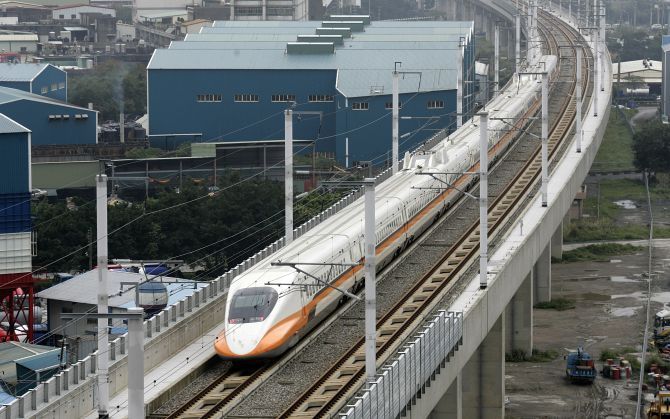German aid likely for Bengaluru-Chennai bullet train

Germany is likely to follow Japan in aiding India’s quest for superfast trains.
After laying the foundations of the Ahmedabad-Mumbai bullet train with aid from Japan, India is tapping Germany to finance and execute the proposed Chennai-Bengaluru high-speed rail project, which will have almost the same terms as the Japanese venture.
For the Rs 110,000-crore (Rs 1,100 billion) Mumbai-Ahmedabad project, Japan has offered a loan of Rs 88,000 crore (Rs 880 billion at a minimal interest of 0.1 per cent, which can be repaid in 50 years.
“Germany has shown an interest in executing and giving a loan for the Chennai-Bengaluru bullet train project. Discussions are in initial stages but they are likely to agree to the way the Japanese are doing it,” said an official close to the development.
In October last year, India and Germany signed a deal on bilateral cooperation in the rail sector.
According to the pact, Germany is expected to look at the possibility of a bullet train and increasing the speed of trains on existing routes to 200 km per hour (kmph).
In order to increase the overall speed of Indian trains, the railways ministry has made a multi-pronged strategy.
“The Railway Board’s plans include running high-speed trains (with a speed of more than 300 kmph), semi high-speed trains (with a speed of 160-200 kmph), and increasing the average speed of the existing trains,” the official added.
The Mumbai-Ahmedabad route will cover 508 km and 12 stations have been proposed on the route. This distance is likely to be covered in two hours and 58 minutes by the bullet train, travelling at 320-350 kmph.
The distance by train between Chennai and Bengaluru is around 358 km. If the Mumbai-Ahmedabad project is taken as the benchmark, the Chennai-Bengaluru route is likely to cost Rs 70,000-80,000 crore (Rs 700-Rs 800 billion).
Many analysts, however, say that the Mumbai-Ahmedabad project cost is too high compared to that offered by Chinese and some European companies.
According to sources, five planned high-speed routes - Delhi-Mumbai, Mumbai-Chennai, Delhi-Kolkata, Delhi-Nagpur, and Mumbai-Nagpur - are also in various stages of consultation.
A Chinese consultant, The Third Railway Survey and Design Institute Group Corporation, is doing the feasibility study for the Delhi-Mumbai route, while a consortium led by French major Systra, RITES, and Ernst and Young are studying the Mumbai-Chennai route.
A consortium led by Spanish company Typsa is studying the feasibility of the Delhi-Kolkata route.
The feasibility for the Delhi-Nagpur and Mumbai-Nagpur routes is being conducted by China and Spain, respectively, on a government-to-government basis.
“Our priority is completing the Mumbai-Ahmedabad and Chennai-Bengaluru routes. The rest of the projects will be taken up only after that,” the official added. For the Mumbai-Ahmedabad route, Japanese Shinkansen technology will be used. The project will cover 155.6 km in Maharashtra, 350.5 km in Gujarat, and 2 km in Dadra and Nagar Haveli.
Photograph: Richard Chung/Reuters












 © 2025
© 2025